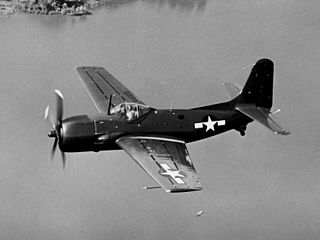
The Lockheed XV-4 Hummingbird was a U.S. Army project to demonstrate the feasibility of using VTOL for a surveillance aircraft carrying target-acquisition and sensory equipment. It was designed and built by the Lockheed Corporation in the 1960s, one of many attempts to produce a V/STOL vertical take off/landing jet. Both prototype aircraft were destroyed in accidents.

The Fairchild XC-120 Packplane was an American experimental modular aircraft first flown in 1950. It was developed from the company's C-119 Flying Boxcar, and was unique in the unconventional use of removable cargo pods that were attached below the fuselage, instead of possessing an internal cargo compartment.

PZL.26 was a Polish sports plane built in 1934 in the PZL works. Ordered by the Ministry of Defence, it was specifically designed for the upcoming Challenge 1934 International Touring Aircraft Contest.

PZL.12 (PZL-H) was a prototype of a Polish amphibious flying boat designed and built in 1931 by Zygmunt Puławski, a pioneering Polish designer. He was killed in a crash involving this design.

The Curtiss XBT2C was a prototype two-seat, single-engined dive/torpedo bomber developed during World War II for the United States Navy. Derived from the Curtiss SB2C Helldiver dive bomber, it was an unsuccessful competitor to meet a 1945 Navy specification for an aircraft to combine the roles that previously required separate types. Unlike the other competitors, the XBT2C was designed to accommodate a radar operator.

The Klemm Kl 36 is a 1930s German four-seat cabin touring and competition monoplane. It was designed by Klemm and Friedrich Fechner and built by Klemm.

The P.W.S.8 was a 1930 Polish sports plane, constructed by the Podlaska Wytwórnia Samolotów (PWS), that remained a prototype.
Western Hirondelle is a Canadian two-seat aircraft for cross country and recreational flying, designed by Western Aircraft Supplies to be homebuilt from plans. The name is French for the Swallow, and the model designation includes the initials of the designers Jean Peters, Glenn Gibb, and John Kopala.

The Kolb Mark III is a family of American side-by-side two seater, high wing, strut-braced, pusher configuration, conventional landing gear-equipped ultralight aircraft that is produced in kit form by New Kolb Aircraft of London, Kentucky, and intended for amateur construction.
The Kolb Kolbra and King Kolbra are a family of American tandem two seater, high wing, strut-braced, pusher configuration, conventional landing gear-equipped ultralight aircraft that are produced in kit form by New Kolb Aircraft of London, Kentucky and intended for amateur construction.

The Glasair Sportsman 2+2 is a single-engine, high wing, strut-braced, four seat kit aircraft, developed by the Glasair Aviation company.
The Rans S-11 Pursuit is an American single-engined, tractor configuration, single-seat, low-wing aircraft, based on the lifting body principle, designed and built by Randy Schlitter. The Pursuit was listed as under development in 1998, but only prototypes were ever completed and the aircraft is not part of the present Rans aircraft line.
The Ritz Model A is an American ultralight aircraft that was designed by Gerry Ritz in 1984 and supplied in the form of plans for amateur construction.
The Turner T-40 is a wooden, single-seat, homebuilt aircraft that was designed by Eugene L. "Gene" Turner, first flying on 3 April 1961.

The Waterman Arrowbile was a tailless, two-seat, single-engine, pusher configuration roadable aircraft built in the US in the late 1930s. One of the first of its kind, it flew safely but generated little customer interest, and only five were produced.

The Sport Performance Aviation Panther is a single seat, all-metal, homebuilt aircraft under development by Sport Performance Aviation of Green Cove Springs, Florida. The aircraft is intended to be supplied as plans and as a kit for amateur construction.

The Glasair GlaStar is an American amateur-built aircraft that was designed by Tom Hamilton and produced by Stoddard-Hamilton Aircraft and later Glasair Aviation. It was first flown in 1994 and was superseded in production by the Glasair Sportsman 2+2 c. 2005. When it was available the aircraft was supplied as a kit for amateur construction.

The Stoddard-Hamilton Glasair II is an American amateur-built aircraft that was designed by Tom Hamilton and produced by Stoddard-Hamilton Aircraft and later Glasair Aviation as a kit for amateur construction. It was first flown in 1989, and remained in production in 2012.
The Wild DoubleEnder is an American twin engine utility aircraft designed for bush flying and also to minimize risk from engine failure and subsequent adverse yaw.

The Nieuport-Delage NiD 940 was a French, tailless, pusher configuration touring aircraft first flown in 1934. It suffered from longitudinal instabilities and despite modifications and a more powerful engine, it did not receive its Certificate of Airworthiness.

















